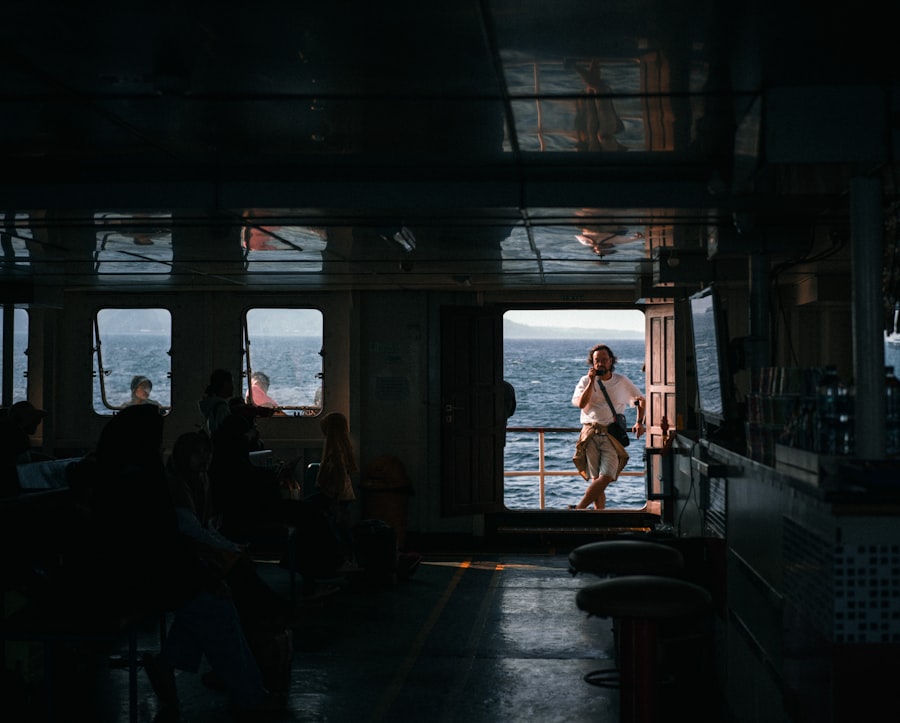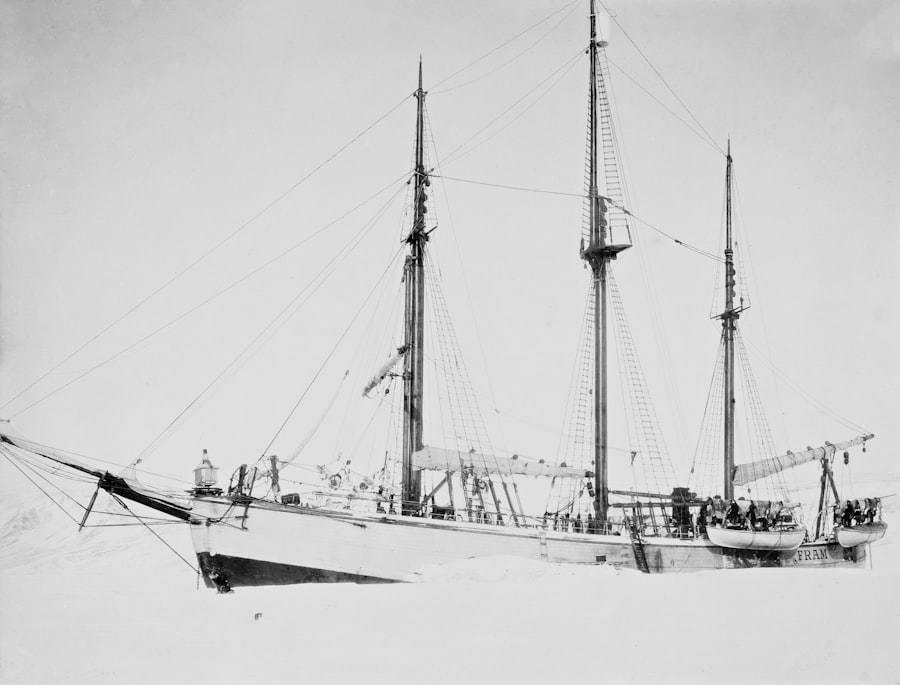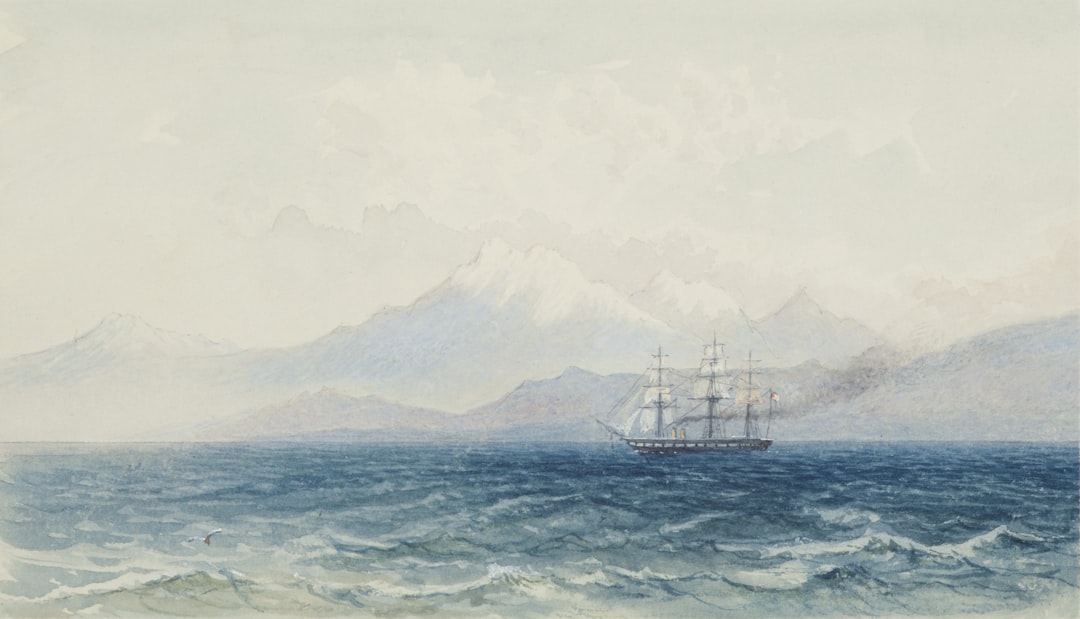The Drake Passage, a body of water situated between the southern tip of South America and Antarctica, is renowned for its tumultuous seas and unpredictable weather. Spanning approximately 600 kilometers (370 miles) in width, it serves as a critical maritime route for vessels traveling to and from the Antarctic region. The passage is not only a geographical marvel but also a significant point of interest for explorers, scientists, and maritime navigators alike.
Its unique position makes it a vital conduit for trade and research, linking the Atlantic and Pacific Oceans while providing access to one of the most remote areas on Earth. Navigating the Drake Passage is often described as a rite of passage for sailors and adventurers. The waters are notorious for their rough conditions, with strong currents and high waves that can challenge even the most experienced mariners.
Despite these challenges, the Drake Passage remains an essential route for those seeking to explore the Antarctic or transport goods to and from this remote region. The allure of its wild beauty and the promise of discovery continue to draw individuals and vessels into its depths, making it a focal point of maritime exploration.
Key Takeaways
- The Drake Passage is a treacherous stretch of water between South America’s Cape Horn and the South Shetland Islands of Antarctica.
- The passage holds historical significance as the route taken by famous explorers like Sir Francis Drake and Charles Darwin.
- Modern challenges of navigating the Drake Passage include strong winds, rough seas, and icebergs, making it one of the most difficult maritime routes in the world.
- Weather patterns in the Drake Passage can change rapidly, impacting navigation and requiring constant monitoring and adjustment of course.
- Technological advancements in maritime navigation, such as GPS and radar systems, have greatly improved safety and efficiency in navigating the Drake Passage.
Historical significance of the Drake Passage
The historical significance of the Drake Passage cannot be overstated. Named after Sir Francis Drake, the English explorer who navigated these waters in the late 16th century, the passage has long been a site of exploration and adventure. Drake’s journey marked one of the first recorded crossings of this treacherous waterway, paving the way for future explorers who sought to chart the unknown territories of the Southern Hemisphere.
His expeditions contributed to the European understanding of global geography and opened new avenues for trade and exploration. Throughout history, the Drake Passage has served as a gateway to Antarctica, facilitating scientific research and exploration. The passage was instrumental during the Age of Exploration, as it provided access to uncharted territories that were rich in resources and potential.
Explorers such as Ernest Shackleton and Robert Falcon Scott relied on this route during their ambitious voyages to the Antarctic, further solidifying its place in maritime history. The legacy of these early explorers continues to inspire modern adventurers who seek to navigate the same waters that once challenged their predecessors.
Modern challenges of navigating the Drake Passage

In contemporary times, navigating the Drake Passage presents a unique set of challenges that mariners must contend with. The unpredictable weather patterns, combined with strong ocean currents, create conditions that can shift rapidly, making it difficult for vessels to maintain a steady course. The passage is known for its fierce storms and high waves, which can reach heights of over 10 meters (33 feet).
These conditions pose significant risks to both crew and cargo, necessitating careful planning and preparation before embarking on a journey through these waters. Moreover, the increasing number of vessels traversing the Drake Passage has raised concerns about maritime safety and environmental impact. As tourism to Antarctica grows, more ships are entering these waters, leading to heightened competition for space and resources.
This influx can exacerbate existing challenges, such as navigating through icebergs and managing potential collisions. Mariners must remain vigilant and adaptable, employing advanced navigation techniques and strategies to ensure safe passage through this demanding environment.
Weather patterns and their impact on navigation
| Weather Pattern | Impact on Navigation |
|---|---|
| Fog | Reduced visibility, requires the use of radar and other navigational aids |
| Storms | High winds and rough seas can make navigation difficult and dangerous |
| Icebergs | Pose a significant hazard to navigation, especially in polar regions |
| Strong currents | Can affect ship speed and direction, requiring adjustments to navigation plans |
The weather patterns in the Drake Passage are notoriously volatile, characterized by rapid changes that can occur within hours. The convergence of warm and cold ocean currents creates a dynamic atmosphere that can lead to sudden storms and rough seas. Mariners must be acutely aware of these patterns, as they can significantly impact navigation decisions.
Understanding local weather forecasts and utilizing advanced meteorological tools are essential for ensuring safe passage through this challenging region. The impact of weather on navigation extends beyond immediate safety concerns; it also affects scheduling and logistics for vessels operating in the area. Delays caused by inclement weather can disrupt planned itineraries, leading to increased costs and potential complications for shipping companies.
As such, mariners must develop contingency plans that account for possible weather-related disruptions, ensuring that they can adapt to changing conditions while maintaining safety as their top priority.
Technological advancements in maritime navigation
In recent years, technological advancements have revolutionized maritime navigation, particularly in challenging environments like the Drake Passage. Modern vessels are equipped with sophisticated navigation systems that utilize GPS technology, radar, and electronic charting systems to enhance situational awareness. These tools allow mariners to track their position accurately and make informed decisions based on real-time data about weather conditions and ocean currents.
Additionally, advancements in communication technology have improved coordination among vessels operating in the Drake Passage. Satellite communication systems enable crews to stay connected with shore-based support teams and other vessels in the area, facilitating information sharing that can enhance safety and efficiency. As technology continues to evolve, it is likely that new innovations will further improve navigation capabilities in this demanding environment, allowing mariners to navigate with greater confidence.
Safety measures and precautions for navigating the Drake Passage

Given the inherent risks associated with navigating the Drake Passage, implementing robust safety measures is paramount. Mariners are encouraged to conduct thorough pre-voyage assessments that include evaluating vessel readiness, crew training, and emergency preparedness. This proactive approach helps ensure that all aspects of safety are addressed before setting sail into potentially treacherous waters.
Moreover, adherence to established maritime safety protocols is crucial when navigating the Drake Passage. This includes maintaining proper watchkeeping practices, conducting regular safety drills, and ensuring that all crew members are familiar with emergency procedures. By fostering a culture of safety onboard, crews can mitigate risks and respond effectively to any challenges that may arise during their journey through this formidable passage.
Environmental considerations in the Drake Passage
The Drake Passage is not only a critical maritime route but also an ecologically sensitive area that requires careful consideration from those who navigate its waters. The region is home to diverse marine life, including whales, seals, and various seabird species that rely on its rich ecosystems for survival. As such, mariners must be mindful of their environmental impact while traversing these waters.
Efforts to minimize environmental harm include adhering to strict regulations regarding waste disposal and emissions from vessels operating in the area. Additionally, many organizations advocate for responsible tourism practices that prioritize conservation efforts in Antarctica and its surrounding waters. By promoting awareness of environmental issues and encouraging sustainable practices among mariners, it is possible to protect the delicate ecosystems that thrive within the Drake Passage.
Importance of the Drake Passage for scientific research
The Drake Passage plays a vital role in scientific research, particularly in studies related to climate change and oceanography.
Scientists often utilize vessels navigating through the passage to collect data on water temperature, salinity, and biological diversity.
Furthermore, the passage serves as a critical access point for researchers conducting field studies in Antarctica. Many scientific expeditions rely on traversing these waters to reach remote research stations or collect samples from pristine environments. The information gathered from these studies contributes significantly to our understanding of global climate patterns and informs conservation efforts aimed at protecting vulnerable ecosystems.
Strategies for successful navigation through the Drake Passage
Successful navigation through the Drake Passage requires careful planning and execution. Mariners must develop comprehensive strategies that account for potential challenges posed by weather conditions, ocean currents, and other navigational hazards. This includes conducting thorough route planning based on current weather forecasts and historical data about prevailing conditions in the area.
Additionally, maintaining flexibility during transit is essential for adapting to changing circumstances. Mariners should be prepared to alter their course or delay their journey if conditions become too hazardous. By prioritizing safety over strict adherence to schedules, crews can navigate through the Drake Passage more effectively while minimizing risks associated with unpredictable weather patterns.
The role of experienced crew in navigating the Drake Passage
The expertise of an experienced crew is invaluable when navigating the complexities of the Drake Passage. Skilled mariners possess a deep understanding of local conditions and are adept at interpreting weather patterns and oceanographic data. Their knowledge allows them to make informed decisions that enhance safety while optimizing navigation efficiency.
Moreover, experienced crews are better equipped to handle emergencies that may arise during transit through challenging waters. Their training enables them to respond swiftly and effectively to unforeseen circumstances, ensuring that both crew members and passengers remain safe throughout the journey. As such, investing in crew training and development is essential for any organization operating in this demanding maritime environment.
Future developments in maritime navigation through the Drake Passage
Looking ahead, future developments in maritime navigation through the Drake Passage are likely to be shaped by ongoing advancements in technology and an increasing focus on sustainability. Innovations such as autonomous vessels may revolutionize how ships navigate these challenging waters, potentially reducing human error while enhancing safety measures. Additionally, as awareness of environmental issues grows, there will likely be greater emphasis on sustainable practices within maritime operations in the region.
This could include stricter regulations regarding emissions from vessels or initiatives aimed at protecting marine ecosystems from potential harm caused by increased shipping traffic. In conclusion, navigating the Drake Passage presents both challenges and opportunities for mariners today. With its rich historical significance, modern technological advancements, and ongoing environmental considerations, this remarkable body of water continues to captivate those who venture into its depths.
The Drake Passage remains a crucial route for modern maritime navigation, particularly for vessels traveling between the Atlantic and Pacific Oceans. Despite advancements in technology and alternative routes, many ships still traverse this challenging waterway due to its strategic importance. For those interested in exploring more about the historical and current significance of the Drake Passage, a related article can be found on MyGeoQuest. This article delves into the passage’s role in global shipping and its impact on maritime routes. You can read more about it by visiting this page.
WATCH NOW! Drake Passage: Earth’s Deadliest Waters Revealed
FAQs
What is the Drake Passage?
The Drake Passage is the body of water between the southern tip of South America and the northern tip of the Antarctic Peninsula. It is known for its rough seas and strong winds.
Do ships still use the Drake Passage?
Yes, ships still use the Drake Passage as a route between the Atlantic and Pacific Oceans, particularly for travel to and from Antarctica.
Are there any challenges associated with navigating the Drake Passage?
Yes, the Drake Passage is known for its rough seas and strong winds, which can make navigation challenging for ships. It is also prone to rapidly changing weather conditions.
What types of ships typically use the Drake Passage?
Expedition cruise ships, research vessels, and occasionally cargo ships use the Drake Passage for transportation and exploration purposes.
Are there any safety concerns for ships using the Drake Passage?
Due to the rough seas and strong winds, there are safety concerns for ships using the Drake Passage. However, modern ships are equipped to handle these conditions, and experienced captains and crew are able to navigate the passage safely.
